Traumatic events that are in the form of natural disasters, such as wildfires, hurricanes, earthquakes or flooding, and human created disasters related to disease outbreak, terrorism, gun violence and other occurrences of mass violence, can have an immense impact on mental health and vulnerability to traumatic stress. (Substance Abuse and Mental Health Services Administration-SAMHSA, 2019)
The use of social media can be a valuable tool in these times of crisis for survivors, first responders, affected communities and beyond. This blog post highlights three ways social media can play a beneficial role before, during and after times of tragedy and trauma.
1. Broadcasting critical information: Social media’s communication platforms can provide announcements to help with preparation for impending events and provide warning, response, recovery and educational updates. A benefit of using social media for providing and receiving information is that the content can be communicated in real time and broadcasted to a broad audience quickly and easily. Social media is often used as the fastest way to inform others, such as family and loved ones, about safety status, needing help or relaying critical messages and updates. This can help decrease fear and worry, as well as empower affected individuals, communities and the public with a feeling of control amidst a situation that is often chaotic and overwhelming.
2. Promoting resiliency: An important factor that creates and strengthens resiliency and the ability to recover and come back from distressing events and experiences is connection to others. A sense of belonging and community can be facilitated through social media and let survivors and affected individuals know they are not alone, they have support and there is an outlet for coping. Social media can also be vital for sustaining ongoing connection in the aftermath of trauma and loss through our personal or group networks, creating digital spaces for sharing virtual memorials, memories, images and story telling.
3. Access to resources: Sites in the form of social media networks, blogs and websites offer a way to obtain and exchange information and resources in times of emergency, crisis, or disaster. Some examples of tools online include:
- Facebook Crisis Response: With this response tool, you can mark yourself safe when an emergency takes place in your area, and those you are connected to on Facebook will be notified. You can also use this tool to find or give assistance and receive information during and after a crisis at https://www.facebook.com/about/crisisresponse.
- Centers for Disease Control (CDC) and Prevention Twitter Alerts: The CDC’s Center for Preparedness and Response provides crisis or emergency updates at https://twitter.com/CDCemergency/alerts.
- Federal Emergency Management Agency(FEMA) Twitter Alerts:FEMA provides support to citizens and first responders before, during and after emergencies at https://twitter.com/fema/alerts.
SAMHSA also recommends these social media resources:
- Disaster Distress Helpline: Provides readiness preparation information, education and coping strategies on Facebook (https://www.facebook.com/distresshelpline),Twitter (@distressline) and text messaging (text TalkWithUs or Hablanos to 66746).
- The Red Cross – Contact and Locate Loved Ones: The American Red Cross can help your family members reconnect, whether the separation was caused by a recent emergency here at home, war or natural disaster overseas at https://www.redcross.org/get-help/disaster-relief-and-recovery-services/contact-and-locate-loved-ones.html.
- Google People Finder: Connects individuals with loved ones in the aftermath of natural and humanitarian disasters at https://google.org/personfinder/global/home.html.
A note of real caution with using social media, of course, is that misinformation can spread quickly and widely, so it is important to be mindful of where you obtain your information online. Another challenge of social media is individual opinion can be interpreted, reported or shared as fact. This confusion can cause additional uncertainty, heightened arousal and response in the face of critical situations. Filtering your social media exposure by using the tools suggested above can help navigate and manage these risks. It is also valuable to be aware of privacy, security and safety issues, such as disclosing personal or location information that could put you at risk on social media, especially in moments of crisis or great need. And finally, an important consideration that has been addressed in previous blogs and content is to mindfully manage and monitor social media exposure and content that can become a source of traumatization.
Social media can certainly be a lifeline in critical times, and I believe the benefits (and challenges) to bring assistance and resources to others prior, throughout and following an event are worth trauma practitioners becoming familiar with in our digitally connected world.
References:
Social media and disasters
https://www.samhsa.gov/find-help/disaster-distress-helpline/social-media
The role of social media in disaster psychiatry
https://www.psychologytoday.com/us/blog/the-aftermath-trauma/201409/the-role-social-media-in-disaster-psychiatry
Community resilience as a metaphor, theory, set of capacities, and strategy for disaster readiness
https://www.ncbi.nlm.nih.gov/pubmed/18157631
Emergent use of social media: a new age of opportunity for disaster resilience
https://www.ncbi.nlm.nih.gov/pubmed/21466029
Online social media in crisis events
https://er.educause.edu/articles/2008/8/online-social-media-in-crisis-events
Resilience-based reflections for disaster recovery:
https://starr.org/training/tlc/blog/resilience-based-reflections-disaster-recovery
Trauma informed considerations & strategies: Helping kids manage distressing events and news: https://starr.org/training/tlc/blog/trauma-informed-considerations-strategies-helping-kids-manage-distressing-events
Trauma from TV, radio, and social media: https://starr.org/training/tlc/focus/trauma-tv-radio-and-social-media


